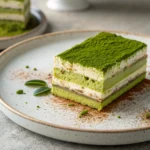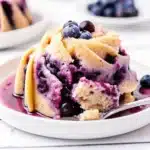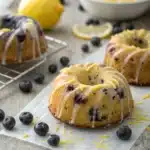Vegan and Gluten-Free Cupcakes aren’t just a dietary accommodation—they’re a celebration of flavor, creativity, and indulgence without compromise. I’m Mary, affectionately known around Bath as The Pudding Lady. My love for puddings and baked treats was born in my mother’s kitchen, where flour dusted the air and golden syrup clung to every surface. I grew up licking batter off spoons and watching cakes rise like magic in the oven.
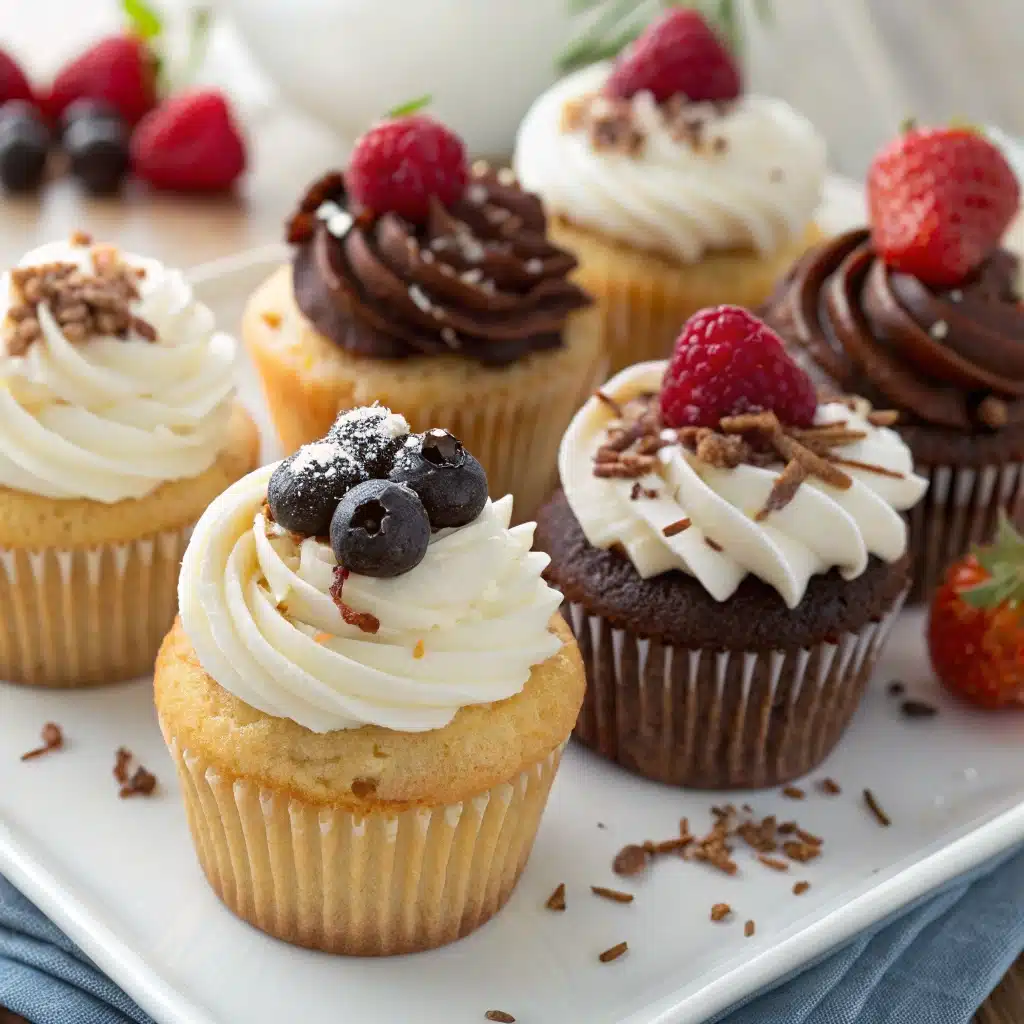
In this guide, we’re diving deep into the world of vegan and gluten-free cupcakes. Whether you’re catering to allergies or simply choosing a lifestyle that’s kinder to your body and the planet, you’ll discover how delicious and joyful these treats can be. We’ll walk through ingredients, baking techniques, flavor pairings, and more.
Table of Contents
Table of Contents

Vegan and Gluten-Free Cupcakes
- Total Time: 35 minutes
- Yield: 12 cupcakes 1x
Description
Moist, fluffy, and allergy-friendly cupcakes that are 100% vegan and gluten-free—perfect for everyone to enjoy.
Ingredients
- 1 1/4 cups gluten-free all-purpose flour
- 1/3 cup unsweetened cocoa powder (optional for chocolate version)
- 3/4 cup almond milk or other plant milk
- 1/2 cup maple syrup
- 1/4 cup coconut oil, melted
- 1 tablespoon apple cider vinegar
- 1 teaspoon vanilla extract
- 1/2 teaspoon baking soda
- 1 teaspoon baking powder
- 1/4 teaspoon salt
- Frosting of choice (vegan & gluten-free)
Instructions
- Preheat oven to 350°F (175°C) and line a muffin tin with cupcake liners.
- In a bowl, whisk together the plant milk and vinegar. Let sit for 5 minutes to curdle.
- Add maple syrup, coconut oil, and vanilla to the milk mixture and stir to combine.
- In a separate bowl, whisk together gluten-free flour, cocoa (if using), baking powder, baking soda, and salt.
- Pour wet ingredients into dry and mix until smooth.
- Divide batter evenly into liners, filling each about 3/4 full.
- Bake for 18–22 minutes, or until a toothpick comes out clean.
- Let cool completely before frosting.
Notes
Customize with fruit, chocolate chips, or nut butter swirls. Store leftovers in an airtight container for up to 3 days.
- Prep Time: 15 minutes
- Cook Time: 20 minutes
- Category: Dessert
- Method: Baking
- Cuisine: Vegan
Nutrition
- Serving Size: 1 cupcake
- Calories: 180
- Sugar: 12g
- Sodium: 150mg
- Fat: 7g
- Saturated Fat: 3g
- Unsaturated Fat: 4g
- Trans Fat: 0g
- Carbohydrates: 28g
- Fiber: 2g
- Protein: 2g
- Cholesterol: 0mg
Understanding Vegan and Gluten-Free Cupcakes
What Makes a Cupcake Vegan and Gluten-Free?
To be classified as vegan, a cupcake must exclude all animal-derived ingredients—no eggs, butter, dairy milk, or honey. Gluten-free cupcakes, on the other hand, omit wheat, barley, and rye, which are all sources of gluten. When you combine these two categories, you get cupcakes that are both plant-based and safe for people with gluten intolerance or celiac disease.
The magic happens with smart substitutions: plant-based milks (like almond or oat), egg replacements (like flaxseed or applesauce), and gluten-free flours (such as almond, rice, or oat flour). These ingredients allow you to bake treats that are both inclusive and utterly delicious.
Key Differences Between Traditional and Allergen-Free Cupcakes
Traditional cupcakes rely on wheat flour, eggs, and butter to create a familiar texture and rise. Vegan and gluten-free cupcakes, however, require careful balancing of ingredients to mimic these properties without triggering allergies or violating dietary choices.
Here’s a quick table comparing the two:
| Feature | Traditional Cupcakes | Vegan & Gluten-Free Cupcakes |
|---|---|---|
| Contains Gluten | Yes | No |
| Contains Dairy/Eggs | Yes | No |
| Texture Challenge | Rarely | Often (needs adjustment) |
| Baking Sensitivity | Low | High (timing, moisture, density) |
| Best For | General consumption | Allergy sufferers & lifestyle choices |
Beyond the ingredients, the taste and texture may slightly differ—but don’t worry, with the right techniques, they can be just as indulgent and satisfying as traditional cupcakes.
Ingredients
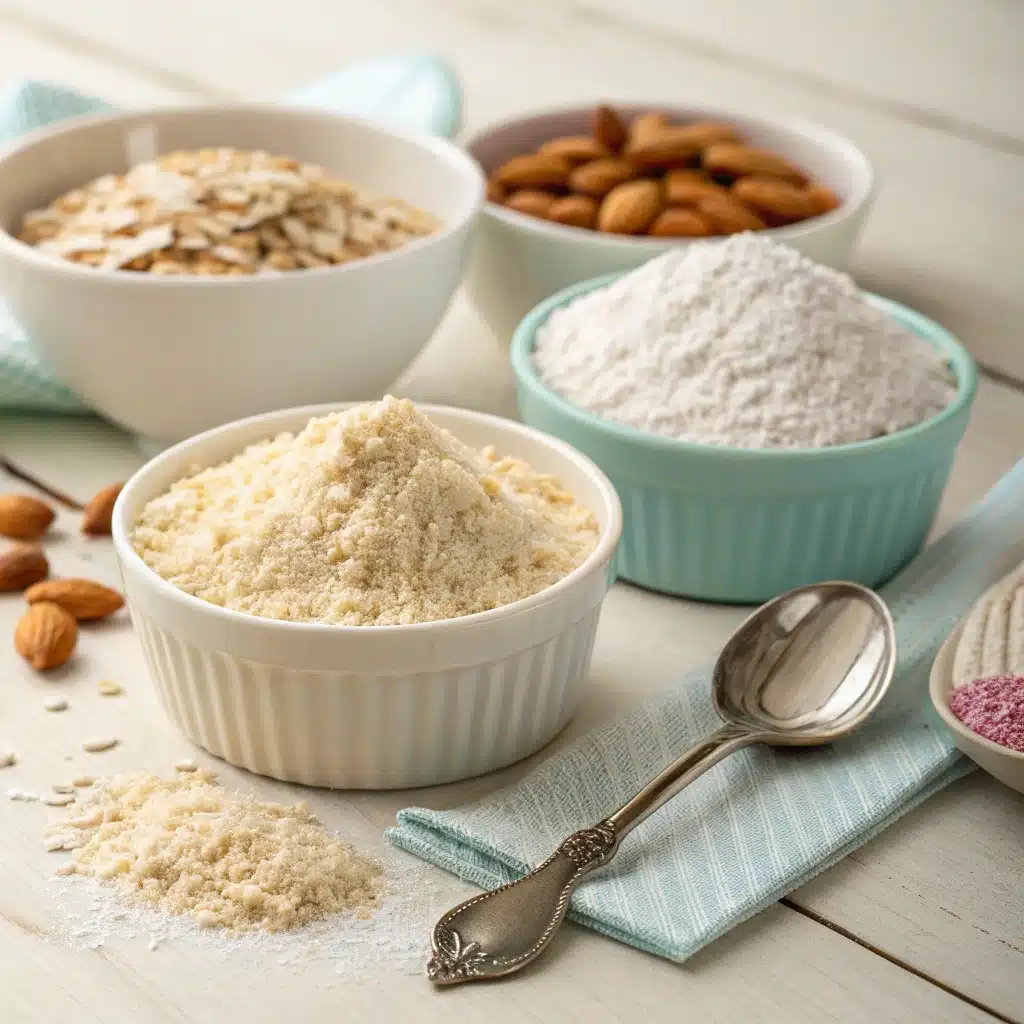
Best Gluten-Free Flours for Cupcakes (Almond, Oat, Rice, etc.)
One of the keys to perfecting vegan and gluten-free cupcakes is understanding the right flour combinations. Since traditional wheat flour contains gluten, you’ll need to use alternatives that can mimic its structure and softness.
Here are the best gluten-free flour options to make sure your vegan and gluten-free cupcakes turn out fluffy and flavorful:
| Gluten-Free Flour | Texture Output | Best Use | Notes |
|---|---|---|---|
| Almond Flour | Moist, Nutty | Chocolate, Vanilla | Adds protein and healthy fats. |
| Oat Flour | Soft, Light | Berry or citrus cupcakes | Naturally sweet and nutrient-rich. |
| Rice Flour | Neutral, Light | Universal base | Needs to be blended with starches. |
| Coconut Flour | Dense, Absorbent | Rich, small-batch bakes | Use with high-moisture ingredients. |
| Sorghum Flour | Mild, Wheaty | Vanilla or spice cupcakes | Blends well with almond or oat flours. |
For the best results, many bakers use a pre-mixed gluten-free flour blend designed for cupcakes. These blends often include a combination of rice, potato starch, and xanthan gum. When baking vegan and gluten-free cupcakes at home, making your own blend using almond flour and oat flour can work just as well—just be sure to balance moisture and structure.
Want to see what flour-free brilliance looks like? Check out our Flourless Chocolate Cake Vegan for a rich, dense example that’s naturally gluten-free and plant-based.
Essential Vegan Replacements (Eggs, Butter, Milk Substitutes)
The second cornerstone of perfect vegan and gluten-free cupcakes is choosing the right egg and dairy alternatives. These swaps ensure that your batter rises correctly, has the right texture, and keeps that classic cupcake fluffiness.
Top Egg Substitutes for Vegan Baking:
- Flax Eggs: 1 tbsp ground flaxseed + 3 tbsp water = 1 egg. Adds body and moisture.
- Applesauce: Perfect for sweet, moist cupcakes.
- Banana: Adds binding and flavor, best in chocolate or cinnamon recipes.
- Vegan Yogurt: Creamy, adds richness, great for dense bakes.
Dairy-Free Butter and Milk Options:
- Coconut Oil: Moistens the batter and adds a hint of coconut flavor.
- Vegan Margarine: Use a 1:1 swap with regular butter.
- Almond Milk: A go-to milk substitute for most vegan and gluten-free cupcake recipes.
- Oat Milk: Neutral flavor, perfect for chocolate and vanilla bases.
- Soy Milk: Higher protein helps with binding and structure.
Using these swaps consistently ensures your vegan and gluten-free cupcakes have that bakery-style taste and texture—without any of the common allergens. These replacements are especially important if you’re creating allergy-friendly treats for events, school snacks, or family gatherings.
Curious how these swaps scale up for full cakes? Don’t miss our luscious Vegan Chocolate Cake—it’s based on the same principles that make great cupcakes.
How to Perfect the Texture and Flavor
Tricks for Moist, Fluffy Vegan Cupcakes
When it comes to vegan and gluten-free cupcakes, getting that perfect bakery-style texture can be a real challenge. But don’t worry—there are proven tricks to make them moist, fluffy, and totally irresistible.
Here’s how to master the texture game:
- Use acidic ingredients like lemon juice or apple cider vinegar. Just 1 teaspoon can activate baking soda and give your vegan and gluten-free cupcakes a beautiful lift.
- Don’t overmix. Gentle folding preserves the air in your batter. Overmixing breaks down structure—especially in gluten-free flour blends—and leaves cupcakes dense.
- Allow the batter to rest for 15–20 minutes before baking. This helps hydrate your flour and improves binding.
- Moisture is key. Add ingredients like mashed banana, coconut yogurt, or unsweetened applesauce to avoid dryness—common in both vegan and gluten-free baking.
- Use full-fat options. Don’t skip fat. Plant-based oils or vegan margarine contribute to that silky-soft bite in your cupcakes.
If you’re experimenting with richness and depth of flavor, check out our Vegan Chocolate Mousse Cake for creamy layering techniques that apply beautifully to cupcakes.
How to Avoid the Gritty Texture in Gluten-Free Baking
Even the tastiest vegan and gluten-free cupcakes can be ruined by a gritty, uneven texture. This often happens with the wrong flour combo or low-fat batter. Let’s fix that.
Here’s what to do:
- Use ultra-fine flour blends. Grit often comes from coarse rice flour. Look for pre-blended, cake-specific gluten-free flours designed for soft bakes.
- Balance starch and protein. Almond flour adds protein and softness. Combine it with tapioca or arrowroot to create structure and reduce graininess.
- Always sift your flour. Clumps of flour or starch can cause gritty bites. Sifting creates a light, even consistency in your batter.
- Add a binder. In the absence of gluten, use chia seeds, psyllium husk, or xanthan gum to stabilize your batter and hold moisture.
- Bake completely. Undercooked cupcakes may feel raw or grainy. Ensure a toothpick comes out clean and the tops bounce back when gently pressed.
If you want a visual reference for a well-textured treat, don’t miss our Labubu Cake. While not gluten-free, it’s a perfect inspiration for how light and fluffy your vegan and gluten-free cupcakes should be.
Pro Tips for Enhancing Flavor in Vegan and Gluten-Free Cupcakes
Texture is vital, but let’s not forget flavor. These tips help maximize taste without adding allergens:
- Use vanilla extract generously—it masks any “beaniness” from egg replacers.
- Incorporate fruit zests like lemon, orange, or lime for bright flavor notes.
- Boost chocolatey depth with espresso powder in cocoa-based cupcakes.
- Pair spices well—cinnamon, nutmeg, and cardamom work great in fall-inspired cupcakes.
- Don’t skip salt—just a pinch enhances sweetness and rounds out your flavor.
The best part? These tricks work universally across all vegan and gluten-free cupcakes, whether you’re going for chocolate, vanilla, berry, or citrus themes.
Popular Vegan and Gluten-Free Cupcake Recipes
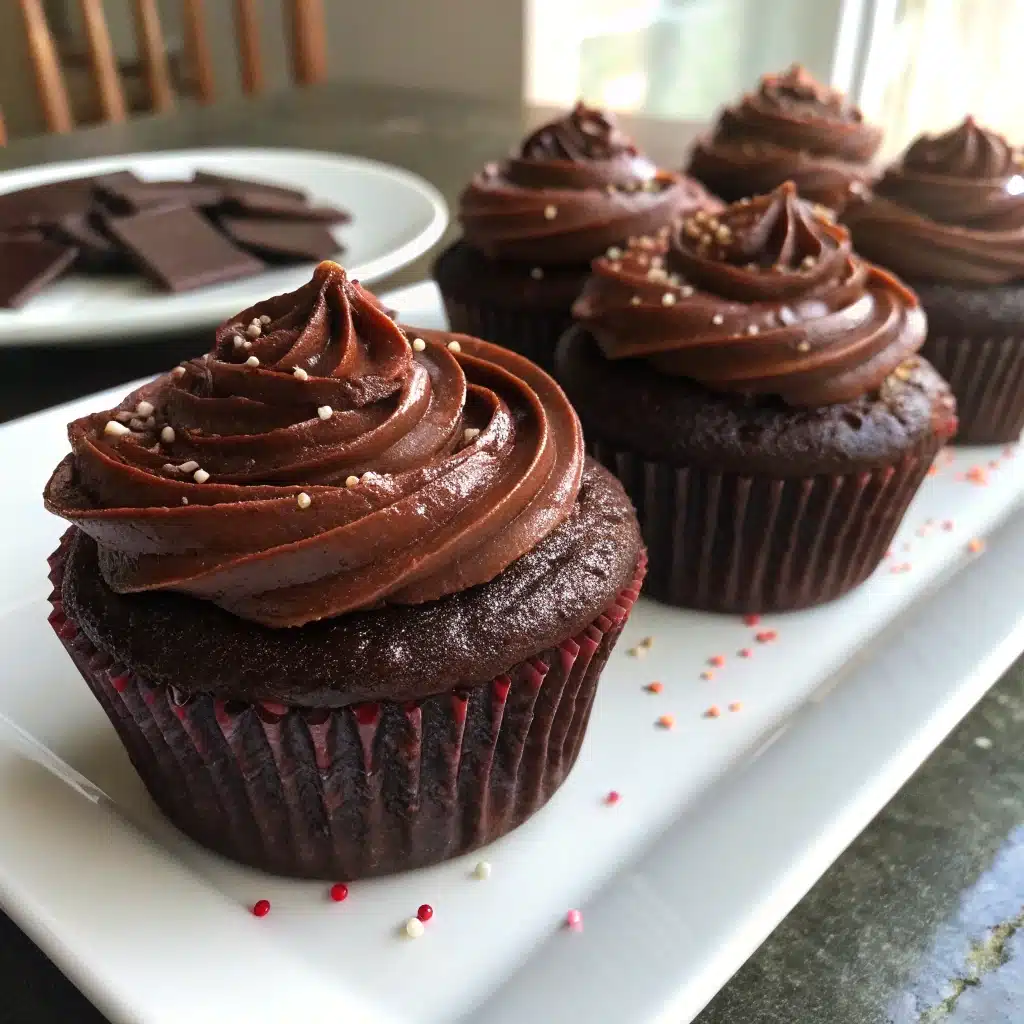
When you’ve mastered the ingredients and technique, it’s time to bake. Whether you’re craving rich chocolate, simple vanilla, or fruity flavors, these tried-and-true vegan and gluten-free cupcake recipes are the perfect place to start.
Classic Vanilla Vegan and Gluten-Free Cupcakes
A soft, fluffy vanilla cupcake is always a winning choice. This timeless favorite is often the base for endless variations—from berries and citrus zest to chocolate chips and almond toppings. The challenge? Nailing the texture while keeping the flavor clean.
Key Ingredients:
- Almond flour + oat flour (or a certified GF all-purpose blend)
- Unsweetened almond milk + 1 tsp apple cider vinegar
- Coconut oil or vegan butter
- Maple syrup or organic cane sugar
- Vanilla extract
- Flaxseed egg (1 tbsp ground flax + 3 tbsp water)
Baking Tips:
- Let the batter rest before baking—it’s essential for structure in vegan and gluten-free cupcakes.
- Fill liners about 2/3 full to avoid overflow.
- Bake at 350°F (175°C) for 20–22 minutes. They’re done when the top springs back when lightly pressed.
Serving Suggestion: Pair with a light coconut cream frosting and top with fresh berries.
Decadent Chocolate Cupcakes with Vegan Ganache
Chocolate lovers, this one’s for you. These moist, indulgent chocolate cupcakes are 100% plant-based and gluten-free—without sacrificing richness or flavor.
Ingredients:
- Almond flour + sorghum flour
- Cocoa powder (unsweetened, high quality)
- Oat milk or soy milk
- Coconut yogurt
- Baking soda + vinegar
- Flax eggs
Ganache Frosting:
- Coconut cream
- Vegan dark chocolate chips
- Pinch of salt
- Maple syrup (optional)
Directions:
- Melt chocolate chips with coconut cream and whisk until the mixture is smooth. Chill, then whip into ganache.
- Frost cooled cupcakes generously.
This recipe is perfect for celebrations, birthdays, or anytime your sweet tooth calls. And for another chocolatey twist on allergy-friendly baking, discover our Vegan Chocolate Cake — it’s where this cupcake recipe got its inspiration!
Bonus: Lemon-Blueberry Vegan Cupcakes (Gluten-Free)
Looking for something fruity and light? These lemon-blueberry cupcakes bring brightness, sweetness, and texture in every bite.
Why it works:
- Lemon zest enhances freshness.
- Blueberries provide juicy bursts without making the batter too wet.
- Use oat and almond flour blend for a springy texture.
Top Tip: Fold blueberries gently into the batter after mixing to prevent bleeding and discoloration.
Decorating Your Cupcakes
Delicious flavor makes cupcakes memorable—but a beautiful finish makes them irresistible. Decorating your vegan and gluten-free cupcakes is more than just frosting—it’s a chance to show off creativity while keeping everything allergen-friendly and plant-based.
Vegan and Gluten-Free Frosting Ideas (Buttercream, Coconut Whip)
To top your vegan and gluten-free cupcakes, you’ll need frostings that are dairy-free, egg-free, and naturally delicious. Thankfully, you can create smooth, decadent frostings without any animal products or gluten-based thickeners.
1. Vegan Buttercream
This is a bakery staple for a reason. It’s pipeable, stable, and ideal for decorating vegan and gluten-free cupcakes.
What you need:
- 1 cup vegan margarine or plant-based butter
- 3 cups powdered sugar
- 2 tablespoons almond or oat milk
- 1 teaspoon vanilla extract
Whip margarine until fluffy, then slowly add powdered sugar and milk until you reach a creamy, pipeable texture.
2. Coconut Whipped Cream
Coconut cream frosting is light, airy, and ideal for fruity or tropical-flavored cupcakes.
Steps:
- Refrigerate a can of full-fat coconut milk overnight.
- Scoop the solid part and beat it with maple syrup and vanilla.
- Pipe onto your chilled vegan and gluten-free cupcakes just before serving.
3. Avocado Chocolate Frosting
This healthier frosting is rich and indulgent without any processed fats or dairy.
Blend together:
- 2 ripe avocados
- 1/4 cup cocoa powder
- 3 tablespoons maple syrup
- 1/2 teaspoon vanilla
Creamy and nutrient-rich, it pairs perfectly with chocolate vegan and gluten-free cupcakes.
Still curious about unexpected, fun toppings? Don’t miss our nostalgic Apple Jack Cereal twist—a creative idea that can be adapted into a whimsical topping for themed cupcakes.
Toppings, Fillings, and Decorative Elements to Avoid
Not all popular cupcake decorations work for vegan and gluten-free cupcakes. Many contain hidden allergens or animal-derived ingredients. Here’s what to avoid—and what to use instead.
❌ Avoid:
- Sprinkle with confectioner’s glaze (note that it may contain shellac, which is not vegan)
- Wheat-based toppings or cookie crumbs
- Commercial frostings made with dairy or gelatin
✅ Use Instead:
- Freeze-dried fruits: Colorful, crunchy, and completely natural
- Vegan chocolate curls: Adds texture and flavor
- Chopped nuts: Use with caution for allergy-sensitive eaters
- Coconut flakes or chia seeds: Great visual appeal and texture
- Citrus zest and edible flowers: A sophisticated finish for gourmet vegan and gluten-free cupcakes
Flavor-Boosting Fillings
Want to take your cupcakes to the next level? Add a surprise inside! Filling your vegan and gluten-free cupcakes is an easy way to elevate them from simple to sensational.
Here are a few winning ideas:
- Berry Compote: Strawberries, blueberries, or raspberries add tart sweetness.
- Vegan Chocolate Spread: Rich and decadent, perfect for chocolate cupcakes.
- Coconut Caramel: Made with coconut milk and maple syrup—caramel flavor with no dairy.
- Dairy-Free Cream Cheese: Great for carrot cake-style cupcakes or lemon flavors.
Don’t forget: fillings should complement your frosting. A fruity filling pairs well with vanilla coconut cream, while a dark chocolate center matches chocolate avocado frosting for rich dessert lovers.
And if you’re looking for color or crunch, revisit our playful Apple Jack Cereal cake for topping texture inspiration—kids love it!
Baking Tips and Common Mistakes to Avoid
Even with the best ingredients and intentions, baking vegan and gluten-free cupcakes can go wrong without a few crucial techniques. From underbaking to overmixing, small mistakes can sabotage texture, flavor, and structure. Here’s how to get it right the first time.
Oven Temperatures and Baking Time for Vegan and Gluten-Free Cupcakes
Baking allergen-friendly cupcakes is a little more sensitive than baking traditional ones. That’s because without gluten and eggs, your batter relies entirely on structure from alternative binders and starches.
Here’s how to bake them perfectly:
- Preheat thoroughly: Ensure your oven is fully preheated to 350°F (175°C). Temperature fluctuation is the enemy of even baking—especially for delicate batters.
- Use the middle rack: This promotes even airflow and keeps cupcake tops from burning.
- Bake for 18–22 minutes: Most vegan and gluten-free cupcakes fall within this range. But every oven is different, so keep a close eye starting at 17 minutes.
- Use liners: Paper or silicone liners help maintain structure and prevent crumbling when removing the cupcakes.
Want to try this in action? Our Vegan Chocolate Gluten-Free Cake uses a similar base and bakes beautifully with the same temperature strategy.
How to Know When They’re Perfectly Baked
One of the most common issues in baking vegan and gluten-free cupcakes is over- or underbaking. Because the batters are often moister, they can look done on the outside while being undercooked inside.
Here’s how to test for doneness:
- Toothpick test: Insert a toothpick into the center. It should come out mostly clean—one or two crumbs are fine, but no wet batter.
- Spring-back test: Lightly press the top of the cupcake. If it springs back, it’s done. If it leaves a dent, give it 1–2 more minutes.
- Check color: The tops should be lightly golden or slightly darker if using cocoa.
Bonus Tip: Once out of the oven, let your vegan and gluten-free cupcakes cool in the pan for 5–7 minutes before transferring to a rack. Gluten-free cupcakes are fragile when hot and can crumble if moved too soon.
Avoid These Common Mistakes
Even experienced bakers trip up when adapting to gluten-free and vegan recipes. Here are the pitfalls to avoid:
❌ Overmixing the Batter
Overworking gluten-free flours can break down their structure and ruin your crumb. Stir until just combined—lumps are okay.
❌ Skipping the Rest Period
Allowing the batter to rest for 15–20 minutes lets the flour and binders fully hydrate. Skipping this step can cause a gritty texture or dense cupcakes.
❌ Using the Wrong Flour Blend
Not all gluten-free blends are equal. Use one made specifically for baking—or combine flours like oat, almond, and tapioca for balance.
❌ Not Measuring Precisely
Vegan and gluten-free recipes are less forgiving. Use a kitchen scale for dry ingredients to improve consistency across batches.
❌ Opening the Oven Too Early
Doing so deflates the cupcakes, especially when there are no eggs to trap and stabilize air.
If you’re nervous about texture and consistency, check out our light yet stable Flourless Chocolate Cake Vegan—it shares many of the same principles used in gluten-free cupcake baking.
Storage and Shelf Life
Once your vegan and gluten-free cupcakes are baked and beautifully decorated, the next challenge is keeping them fresh. These cupcakes lack preservatives and traditional stabilizers like eggs or dairy, which means they require a bit more care in storage. Here’s how to extend their life while maintaining their taste and texture.
How Long Do Vegan Cupcakes Stay Fresh?
On the countertop, vegan and gluten-free cupcakes typically stay fresh for 2 to 3 days, depending on ingredients and humidity. Without dairy and eggs, they’re less prone to spoilage, but they also dry out quicker due to absorbent gluten-free flours.
Storage tips for maximum freshness:
- Cool completely before storing. Warm cupcakes can produce steam, leading to sogginess and potential mold growth.
- Store in an airtight container at room temperature for up to 48 hours.
- If using a perishable frosting (like coconut cream), refrigerate immediately.
Here’s a quick reference chart:
| Storage Method | Freshness Duration | Notes |
|---|---|---|
| Room Temperature | 2 days | Best for cupcakes with shelf-stable frostings |
| Refrigerated | 4–5 days | Ideal for creamy or fruit-filled frostings |
| Freezer (sealed) | Up to 2 months | Must be thawed properly before serving |
Want to try long-term storage? See how our Flourless Chocolate Cake Vegan holds up in the freezer—it’s an ideal recipe for prepping ahead.
Freezing and Reheating Tips Without Ruining Texture
Freezing vegan and gluten-free cupcakes is totally doable—as long as you handle the process correctly. Done wrong, they can become crumbly, dry, or lose their frosting integrity. Done right, they’ll taste freshly baked weeks later.
✅ Freezing Instructions:
- Cool cupcakes completely before freezing.
- Skip the frosting until after thawing (frosting can separate when frozen).
- Wrap each cupcake individually in plastic wrap or place in airtight freezer bags.
- Label and date your storage container.
For best texture and flavor, use within 2 months. After that, moisture loss begins to affect the texture of the cupcake.
🔄 Thawing & Reheating:
- Countertop method: Remove from freezer and let thaw at room temp for 2–3 hours.
- Microwave method: Use only for unfrosted cupcakes. Microwave on low for 15–20 seconds.
Once thawed, frost as desired. For texture comparison, look at our moist and dense Vegan Chocolate Cake—it shares the same storage properties as cupcakes made with similar base ingredients.
Nutrition and Health Benefits
One of the biggest draws of vegan and gluten-free cupcakes—aside from being delicious—is that they often come with added nutritional perks. Whether you’re managing dietary restrictions or simply making healthier dessert choices, these cupcakes can offer a guilt-free way to indulge.
Are Vegan and Gluten-Free Cupcakes Healthier?
While cupcakes are still a treat, there are reasons many consider vegan and gluten-free cupcakes the “better-for-you” option. Here’s why:
✅ No Animal Products
By skipping eggs, butter, and milk, you avoid saturated fat and cholesterol. Plant-based ingredients tend to be lower in calories and easier to digest for some people.
✅ Gluten-Free for Sensitive Stomachs
People with celiac disease or gluten intolerance can enjoy cupcakes without the risk of digestive distress. Gluten-free flours like almond or oat often bring added fiber, too.
✅ Less Processed Ingredients
Many recipes favor whole food ingredients—like mashed banana, flaxseed, maple syrup, or nut milk—which are less refined than traditional baking staples.
Nutritional Comparison: Vegan/Gluten-Free vs. Traditional Cupcakes
Here’s a rough side-by-side based on common ingredients:
| Nutritional Aspect | Traditional Cupcake (1) | Vegan & Gluten-Free Cupcake (1) |
|---|---|---|
| Calories | 300–400 kcal | 200–300 kcal |
| Saturated Fat | 6–9 g | 2–5 g |
| Cholesterol | 40–60 mg | 0 mg |
| Fiber | 0.5–1 g | 2–4 g |
| Sugar | 30–40 g | 20–30 g (varies by sweetener) |
Keep in mind, nutrition depends heavily on the ingredients used. A coconut oil and almond flour-based cupcake will have more fat (but healthier fat) than one made with applesauce and oat flour.
For an example of how indulgence can still align with clean-eating goals, take a peek at our Vegan Chocolate Mousse Cake. It’s rich, plant-based, and still lighter than its traditional counterpart.
How to Make Your Cupcakes Even Healthier
If you’re baking vegan and gluten-free cupcakes with wellness in mind, here are some smart swaps:
- Use natural sweeteners like maple syrup or dates.
- Choose whole grain or nut-based flours for added fiber.
- Replace oil with applesauce or mashed banana to reduce fat.
- Add chia seeds, flaxseeds, or walnuts for protein and omega-3s.
- Top with fruit instead of frosting for a lighter finish.
These tweaks won’t just make your cupcakes healthier—they’ll also add interesting textures and flavors. Think of it as baking with benefits.
Conclusion
At first glance, baking vegan and gluten-free cupcakes may seem complicated—but with the right ingredients, techniques, and a bit of practice, it becomes second nature. Whether you’re avoiding gluten for health reasons or embracing plant-based living, these cupcakes let you indulge without compromise.
From choosing the best flour blends and egg replacers to perfecting the baking process and decorating like a pro, you now have all the tools to bake cupcakes that are:
- Moist and flavorful
- Allergy-friendly
- Beautifully decorated
- Perfect for any occasion
The best part? You don’t need to give up anything you love about cupcakes to make them work for your diet.
Looking for inspiration? Try our moist, rich Vegan Chocolate Gluten-Free Cake and start experimenting with the same flavor combinations in your cupcake tins.
So go ahead—grab your flaxseeds, almond flour, and oat milk. It’s time to bake joy, one cupcake at a time
Fore more recipes follow me in Facebook, medium and Pinterest
FAQs
How long do vegan cupcakes stay fresh?
Vegan cupcakes—especially when also gluten-free—stay fresh for about 2 to 3 days at room temperature when stored in an airtight container. Since vegan and gluten-free cupcakes tend to dry out faster due to the lack of eggs and gluten, refrigeration is recommended for frosted or filled varieties. If refrigerated, they last 4–5 days, and up to 2 months when frozen (unfrosted).
How do you know when gluten-free cupcakes are done?
You can tell your vegan and gluten-free cupcakes are done baking when:
A toothpick inserted into the center comes out mostly clean (a few crumbs are okay).
The tops gently spring back when pressed.
Edges slightly pull away from the liner or baking pan.
Avoid underbaking—gluten-free batters often appear set before they’re fully cooked.
What do gluten-free cupcakes taste like?
Gluten-free cupcakes can taste just as delicious as traditional ones when made right. Expect a slightly different texture depending on the flours used:
Almond flour brings richness and nuttiness.
Oat flour delivers a soft, light crumb.
Properly balanced blends taste moist, flavorful, and indistinguishable from regular cupcakes—especially in vegan and gluten-free cupcakes that use cocoa or fruit.
Flavor-wise, they’re just as sweet and satisfying, especially when topped with vegan frosting or fillings.
How long do you cook gluten-free cupcakes?
Vegan and gluten-free cupcakes typically bake for 18–22 minutes at 350°F (175°C). However, baking time may vary depending on:
The moisture content of your batter
Your specific gluten-free flour blend
Cupcake size (standard vs. mini)
Always start checking at the 17-minute mark to avoid overbaking.

